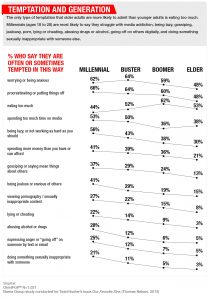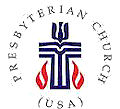Have you ever been to a concert or other large group event, and had the leader on the stage either start or end the time with a “THANK YOUUUUUUUU!!!” and results in wild applause? When celebrities are interviewed on late night shows in front of live audiences, and mention where they’re from, invariably there will be a “woot!” from the crowd, or some exclamation that they appreciate or are from the same location. They are “shout outs”- public expressions of thanks or gratitude. Typically, the phrase is reserved for when it happens on tv or the radio, but I would offer they happen in other ways, too: from mentions and tags on social media to dedications in the covers of books to those named in acceptance speeches. They are positive ways that we name those to whom we are aligned.
This morning our text is a shout out. Specifically, from Jesus’ disciples to let people know who Jesus was. Each of the gospels tells of this entry into Jerusalem with a little bit of a unique spin. In the case of Luke’s gospel, there are no palms or tree branches, for which this Sunday is given its title. But we do have the disciples laying out their cloaks. They weren’t doing this to cover puddles; it was a sign of the utmost respect, usually reserved for royalty. By lining the road with their garments, they were declaring Jesus as king. This fits well, of course, with his entry on the humble donkey, a sign which the prophet Zechariah described almost exactly[i]. As he comes, the whole multitude of disciples begin to give him accolades, shout outs, along the way, echoing those of the Psalmist we heard a few moments ago.
Blessed is the one who comes in the name of the Lord[ii].
It is a joyful celebration, as the crowd is swept into that energy.
Shouts and cheers are inevitable. It is how we respond to good news . . . with great joy. Sound familiar? Luke’s gospel is the one that recounts for us a choir of angels proclaiming the amazing news of Jesus’ birth to shepherds on a hillside. They break out in song and give a “shout-out” of glory to God. William G. Carter notes that Palm Sunday mirrors this proclamation, even down to the message:
When Jesus was born, the Gospel writer tells us that angels appeared to sing, “Peace on earth” (Luke 2:14)[iii].
This joyful parade is a response to the amazing news of the incarnation. Now, the disciples seem to get it. This is the long-awaited for king. The Messiah has arrived! Good news is contagious, and it builds. The community is celebrating!
Now, as Jesus rides his colt toward Jerusalem, the people look to the sky and sing, “Peace in heaven.” Heaven sings of peace on earth. Earth echoes back, “peace in heaven.”[iv]
Palm Sunday, he offers, is a liturgical act between us and God. It is similar to the feeling we get when we gather for worship, we stand and greet each other in Christ’s name: the peace of Christ be with you (and also with you). There’s a joyful bubbling up of talking and laughter as we engage with each other. It is a boisterous time in our worship service. So much so that it stands to wonder what would happen if Denise didn’t give you a musical cue to sit back down. Would we even get to the worship that is planned for the day?
SOME of the pharisees witnessing this event might have had the same question. They saw the energy brimming and were concerned. Perhaps they anticipated that there would be a riot; maybe they were unsatisfied over the cries that Jesus was king; or disturbed by the attention that Jesus and his followers might get from the Roman authorities especially with such a royal fanfare on display. They wanted Jesus to put an end to it. To get everyone back in line, to dull the roar.
But some messages can’t be silenced.
Jesus’ famous line “if these were silent, the stones would shout out.” (verse 40) echo the prophetic warning in Habbakuk 2:9-11, as the prophet declares that injustice will no longer prevail, for the very stones of the house built on corruption “will cry out from the wall.” This quote foreshadows what is coming up next in the gospel narrative, as Jesus will turn over tables and clear the temple, but also points to the bigger picture of the gospel as good news. Fred Craddock offers this on Jesus’ reply:
In other words, some things simply must be said; the disciples are expressing what is ultimately and finally true; God will provide a witness through every mouth be stopped; opposition to Christian witness cannot succeed; and the truth will come out, it cannot long be silenced[v].
Do you know the expression “if these walls could talk?” It usually refers to something that is going to be hidden. The stones shouting is the opposite of this idea. Jesus says this is a message that is not going away. It isn’t one that can be buried or hidden. In fact, it’s about to go viral. So much so that even if the disciples were quieted, the very stones that make up Jerusalem would shout it out.
The stones tell the story: lining the way into the city and celebrating the arrival of a king, crying out from the wall at injustice in the temple, leading up the stairs to a shared meal in the upper room, a resting place for clasped hands in the garden of Gethsemane, a wall to push against in a courtyard as the rooster crows three times, rough under the feet on the way to the cross, and finally heavy and large rolled in front of the tomb. Over and over again, the stones tell the story. Even if everything else is silenced, they shout out the fullness of what God is doing. They lead us, step by step, on the path into Jerusalem and into this most holy of weeks.
Can you imagine the story they could tell? William Klein suggests that:
The singing stones’ song on the day Jesus entered the city would sing, not just for joy at the coming of a gracious king, but also for grief and lamentation – like Rachel weeping over her children, like Jesus weeping over the city. Their song would be a cry rising from any boulevard of broken dreams across this planet where God’s people have suffered[vi].
In other gospel texts, the people along the road shout “Hosanna!” or “save us!” Even if the disciples are silenced, the stones will continue this cry and prayers for a Savior.
The history of God’s people is rich in the roads and walls of Jerusalem, something that was true in the first century and still is true today. When I was in seminary, I had the amazing opportunity to spend 3 weeks in a May term class traveling all over the holy land. Our final destination was Jerusalem, where we literally walked in the path of Jesus. On our first evening, we walked to the western wall of the old city. This holy place, also called the Wailing Wall, is a place devoted to prayer, from orthodox Jews to Christian pilgrims, many gather in different ways to offer their prayers at a place some believe to be the closest point to the holiest of holy places where God resides. One of the practices there is to write your prayer on a slip of paper, and slide it into the cracks of the wall. Many of us did so, and I can tell you the placing of a prayer into the wall is a surreal experience. I found myself drawn into a quiet and stillness. The only words that came to mind as I stood there in silence were the Lord’s Prayer, and I remember praying that at the wall, “thy kingdom come, thy will be done” alongside fellow pilgrims and those who were Jewish, and hearing the evening call to prayer for Muslims sounding. It was a profound moment of prayer, interlaced with stone.
The stones of Jerusalem continue to tell the story of God’s people, shouting out prayers of longing for a Savior and for God’s power to be revealed in this world. The stones of Jerusalem continue to cry out for peace, a peace that perhaps can only come from heaven. The stones of Jerusalem continue to shout in praise for a God through whom all things are possible, one who comes as king in the surprise of a humble colt. The stones will continue to shout even if all else is silenced. But may that not be so. May we be so bold, as we enter the stories of Jerusalem this week, to join in shouting out. For the king has come. Hosanna! May there be peace on earth . . . as it is in heaven. Amen.
~sermon by Rev. Elizabeth Lovell Milford, Heritage Presbyterian Church, April 14, 2019 (Palm Sunday)
___________________________________________________________________________________________________
[i] “Rejoice greatly, O daughter Zion! Shout aloud, O daughter Jerusalem! Lo, your king comes to you; triumphant and victorious is he, humble and riding on a donkey, on a colt, the foal of a donkey.” Zechariah 9:9
[ii] Psalm 118:26.
[iii] William G. Carter, “Pastoral Perspective: Luke 19:28-40,” Feasting on the Word: Year C, Volume 2, David L. Bartlett and Barbara Brown Taylor, editors (Louisville, KY: Westminster John Knox Press, 2009).
[iv] William G. Carter, “Pastoral Perspective: Luke 19:28-40,” Feasting on the Word: Year C, Volume 2, David L. Bartlett and Barbara Brown Taylor, editors (Louisville, KY: Westminster John Knox Press, 2009).
[v] Fred B. Craddock, Interpretation: Luke, (Louisville, KY: John Knox Press 1990).
[vi] William M. Klein, “Theological Perspective: Luke 19:29-40,” Feasting on the Gospels: Luke, Volume 2, Cynthia A. Jarvis and E. Elizabeth Johnson, editors, (Louisville, KY: Westminster John Knox Press, 2014).


